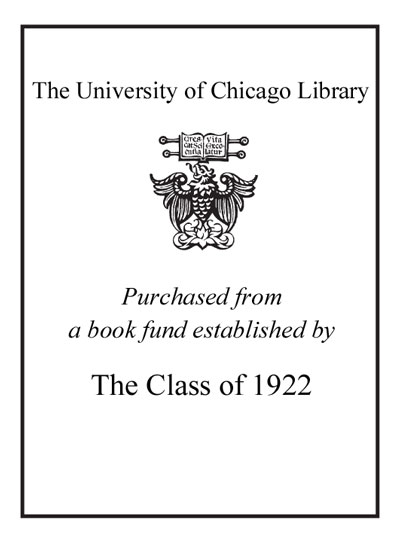Lairds, land and sustainability : Scottish perspectives on upland management /
Saved in:
| Imprint: | Edinburgh : Edinburgh University Press, c2013. |
|---|---|
| Description: | xviii, 238 p. : ill. ; 25 cm |
| Language: | English |
| Subject: | |
| Format: | Print Book |
| URL for this record: | http://pi.lib.uchicago.edu/1001/cat/bib/9328277 |
Table of Contents:
- Preface
- List of acronyms
- List of tables
- List of figures
- List of boxes
- Notes on the contributors
- Part 1. Sustainability in the uplands
- Chapter 1. Sustainability in the uplands: introducing key concepts
- Introduction
- The focus of this book
- Defining uplands
- Human dimensions of change in upland regions
- What does a sustainability agenda imply for the governance of upland areas?
- What can we learn from collaborative, landscape-scale approaches to upland governance?
- Why should we afford more attention to property rights?
- Unpacking private and common property rights
- Land reform and a 'community ownership' turn?
- Contemporary property rights in the Scottish uplands: a brief overview
- Conclusion
- Notes
- References
- Chapter 2. Recognising Scotland's upland ecosystem services
- Introduction
- From sectoral to integrated approaches to managing UK uplands
- Recognising ecosystem services with upland managers in mind
- From 'traditional' to 'consumptive' enterprises: provisioning services
- Upland agriculture: a less favoured enterprise?
- Towards sustainable forest management and renewable energy provision
- Experiencing uplands: cultural services
- Upland biodiversity: habitats that span landscapes
- Upland recreation: a growing industry
- Field sports and game management
- What role for climate-change mitigation and risk management?
- Upland communities and economies
- What are the lessons for sustainable governance?
- Notes
- References
- Part 2. Perspectives from private landownership
- Chapter 3. The Scottish private estate
- Introduction
- The rise of the sporting estate
- The current dominance of private landownership
- Absentee and foreign ownership
- Twenty-first-century land reform
- Impacts of land reform on private landownership
- The contemporary privately owned estate
- Conclusion
- Notes
- References
- Chapter 4. What motivates private landowners?
- Introduction
- Landowners' motivations and attitudes
- Investigating owners' priorities on selected estates
- The priorities and motivations of private landowners
- Investigating estate economics
- The estate's natural heritage
- The social implications of private landownership
- The impact of motivation on landowner decisions
- Notes
- References
- Chapter 5. The laird and the community
- Introduction
- Exploring interactions between landowners and communities
- Identifying key issues
- Housing
- Employment
- Community spirit and cohesion
- The role of the landowner in addressing community issues
- Housing provision and development
- Developing employment opportunities
- Players, processes and policy: the potential for private landowner and estate community partnerships
- Breaking down traditional hierarchies
- Positive communication and the 'face' of the estate
- Proactive involvement
- Resource and skill limitations
- Disconnection, a pathy and uncertainty
- Inequality and power relations
- Implications for policy and practice
- Notes
- References
- Part 3. Perspectives from community and NGO landownership
- Chapter 6. Community landownership: rediscovering the road to sustainability
- Introduction
- The emergence of communal land tenure in Scotland
- Community landownership - panacea or Pandora's Box for sustainability?
- Exploring sustainability on Europe's western edge
- Methodology: capturing different narratives of community ownership
- Impacts and processes of community landownership - narratives of experience
- Narratives of sustainable rural development
- Theme 1: Community capacity (re-)building
- Theme 2: Redefining participatory governance and collaborative working
- The role of local leadership and communication in managing conflict
- Theme 3: Building a framework for economic development
- Theme 4: Reconfiguring community-natural resource relationships
- Discussion
- Moving towards a sustainable future
- Investing in social capital
- Managing conflict
- Economic challenges and the importance of the community asset base
- Reconstructing sustainability
- References
- Chapter 7. Buying nature: a review of environmental NGO landownership
- Introduction
- Environmental NGOs - the wider context
- The rise of conservation NGO landownership in Scotland
- Environmental NGO landowners - part of a sustainable future for Scotland?
- Species and habitat conservation
- Landscape protection and enhancement
- Socioeconomic benefits and impacts
- Collaborative working
- Discussion - NGO landownership in twenty-first-century Scotland
- Notes
- References
- Part 4. Aligning upland estate management with sustainability
- Chapter 8. A sustainability tool for the owners and managers of upland estates
- Introduction
- Defining sustainability principles for upland estates
- Sustainability indicators and the importance of participation
- Developing a sustainability tool
- Input from a range of stakeholders
- A collective thought process
- Perceptions and principles of sustainability in estate management
- The tool in detail
- Sustainability Principle 1. Adapting management
- Sustainability Principle 2. Broadening options
- Sustainability Principle 3. Ecosystem thinking
- Sustainability Principle 4. Linking into social fabric
- Sustainability Principle 5. Thinking beyond the estate
- Using the tool on the ground
- Moving forwards
- Notes
- References
- Chapter 9. Lessons for sustainable upland management
- Introduction
- Key outcomes from the research: aligning upland estate management with sustainability
- A proactive estate is a sustainable estate
- The importance of taking a long-term approach in estate planning
- The importance of connectivity
- The multifunctional roles of estates
- The virtuous circle of community engagement and collaboration
- Looking ahead: implications for policy, practice and future research
- Conclusions
- Notes
- References
- Index

